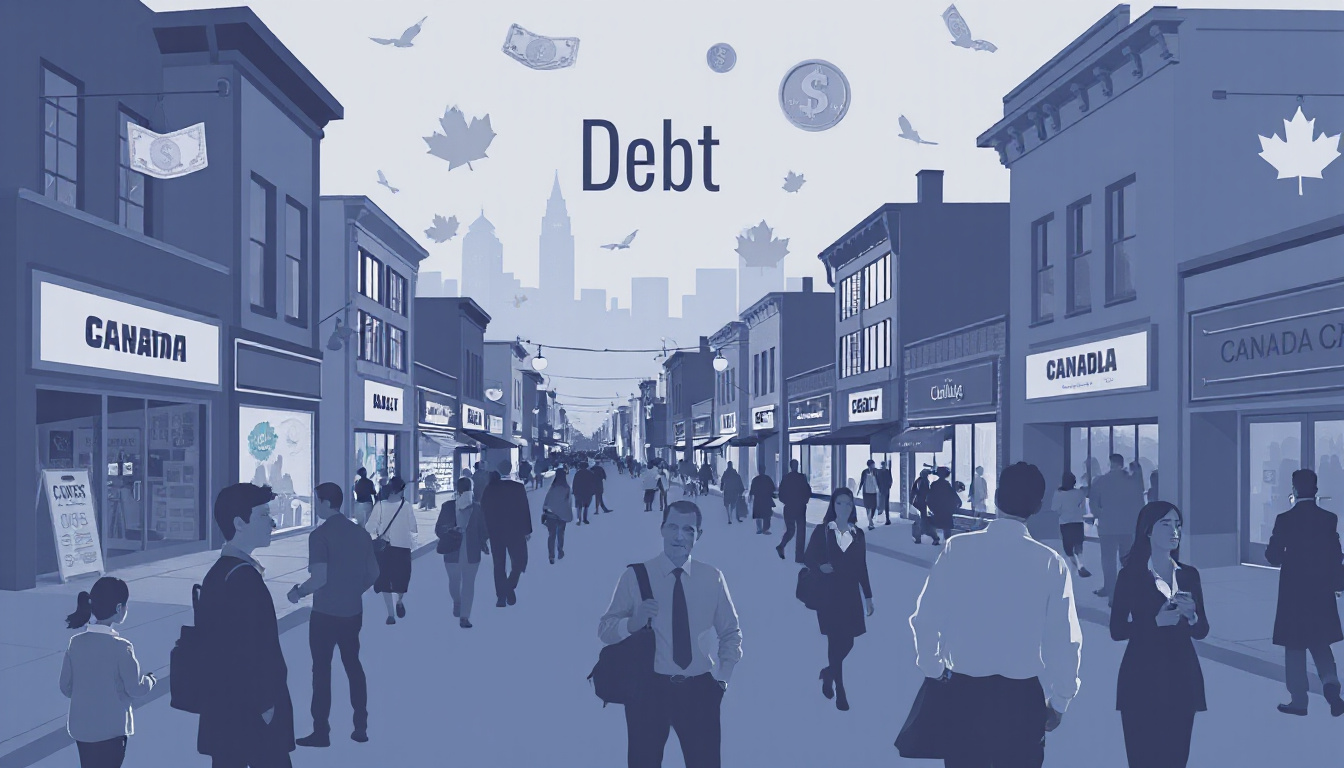As of 2023, the average debt for residents of Nanaimo, BC is approximately CAD 40,000, a substantial figure that reflects the financial challenges many Canadian households face today. This average debt level encompasses various forms of debt, including credit cards, lines of credit, personal loans, and mortgages. Understanding the average debt in Nanaimo, BC, is crucial for both residents and local policymakers, as it directly impacts individual finances and the overall health of the local economy. Factors contributing to these high debt levels include rising living costs, economic fluctuations, and the increasing cost of housing. Additionally, the burden of debt can have detrimental effects on residents’ mental health and overall well-being. However, there are effective strategies for managing and reducing debt, such as financial counseling and community resources, that can help residents regain their financial footing.

Key Takeaways
- Nanaimo BC has a significant average debt level that impacts its residents.
- Several factors contribute to the increasing debt levels in Nanaimo BC, including housing costs and economic conditions.
- The heavy debt burden affects both individual residents’ financial health and the local economy’s growth.
- Residents can implement strategies such as budgeting and financial education to manage and reduce their debt.
- Community support and local initiatives are essential in addressing the debt issues faced in Nanaimo BC.
Overview of Average Debt in Nanaimo BC
As of 2023, the average debt per household in Nanaimo, BC is approximately CAD 82,000, including various forms of debt such as mortgages, personal loans, and credit card debt. This figure is derived from recent studies conducted by the Canadian Institute for Mortgage and Housing and reflects a growing concern about household financial stability in the region. Notably, the average debt level in Nanaimo has shown an upward trend over the past five years, along with increasing housing prices and a challenging economic landscape. This statistic underscores the importance of understanding consumer debt dynamics, especially as local homeowners grapple with rising costs of living and economic uncertainty. Statistics Canada reports that almost 75% of British Columbians carry some form of debt, further emphasizing the significance of financial literacy and debt relief services across the province.
Factors Contributing to Debt Levels in Nanaimo BC
In 2023, the average debt per household in Nanaimo, BC is approximately CAD 56,000. This figure illustrates a growing concern for many residents as rising costs of living, housing prices, and consumer spending contribute to increased financial strain. According to a recent report by Equifax, the average consumer debt, which includes credit cards, personal loans, and lines of credit, has risen steadily in recent years, reflecting a national trend. Factors influencing this average debt amount include a
10.2% rise in housing prices over the past year, as noted by the Canadian Real Estate Association (CREA), and higher rates of borrowing, as Canadians are looking to finance their lifestyles amidst inflation. Understanding these local financial dynamics is critical for addressing debt relief solutions.
‘Debt is the slavery of the free.’ – Publilius Syrus

Impact of Debt on Residents and the Local Economy
As of 2023, the average debt per household in Nanaimo, BC, is approximately CAD 80,000. This figure underscores a growing trend of financial strain among residents, which can have significant ramifications for the local economy. With many households juggling multiple debt obligations, the potential for reduced consumer spending and higher rates of financial distress increases. According to Statistics Canada, rising levels of household debt can lead to increased defaults and higher demand for debt relief services. This situation can ultimately affect local businesses, as consumers may divert funds from spending to manage debt repayments. Understanding the implications of high average debt is crucial for policymakers and community leaders in Nanaimo as they strive to promote economic stability and support residents in financial need.
Strategies for Managing and Reducing Debt in Nanaimo BC
As of 2023, the average debt per household in Nanaimo, BC, stands at approximately CAD 63,000. This statistic emphasizes the financial pressures faced by residents in this beautiful coastal city. With rising living costs and challenges such as increased inflation, many households in Nanaimo find themselves relying on credit to make ends meet. According to Equifax Canada, the total national average debt, which also includes mortgages, highlights a concerning trend that is mirrored in Nanaimo’s numbers. To effectively manage and reduce this average debt, residents can adopt several strategies, such as creating a comprehensive budget, seeking credit counseling services, and exploring local debt relief programs. Understanding these figures is crucial, as they not only reflect personal financial health but also the broader economic landscape in which both individuals and families navigate. For those in Nanaimo seeking more information on managing their finances, resources are available to guide them towards more sustainable living.
